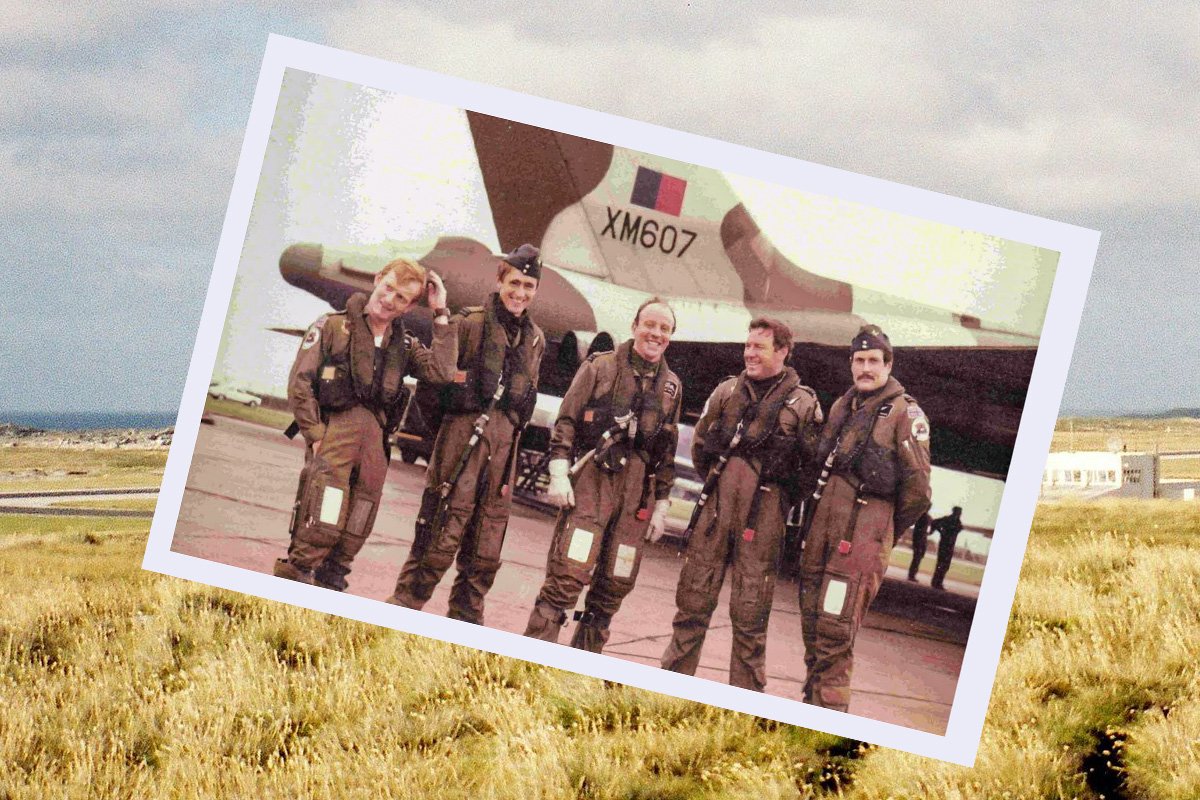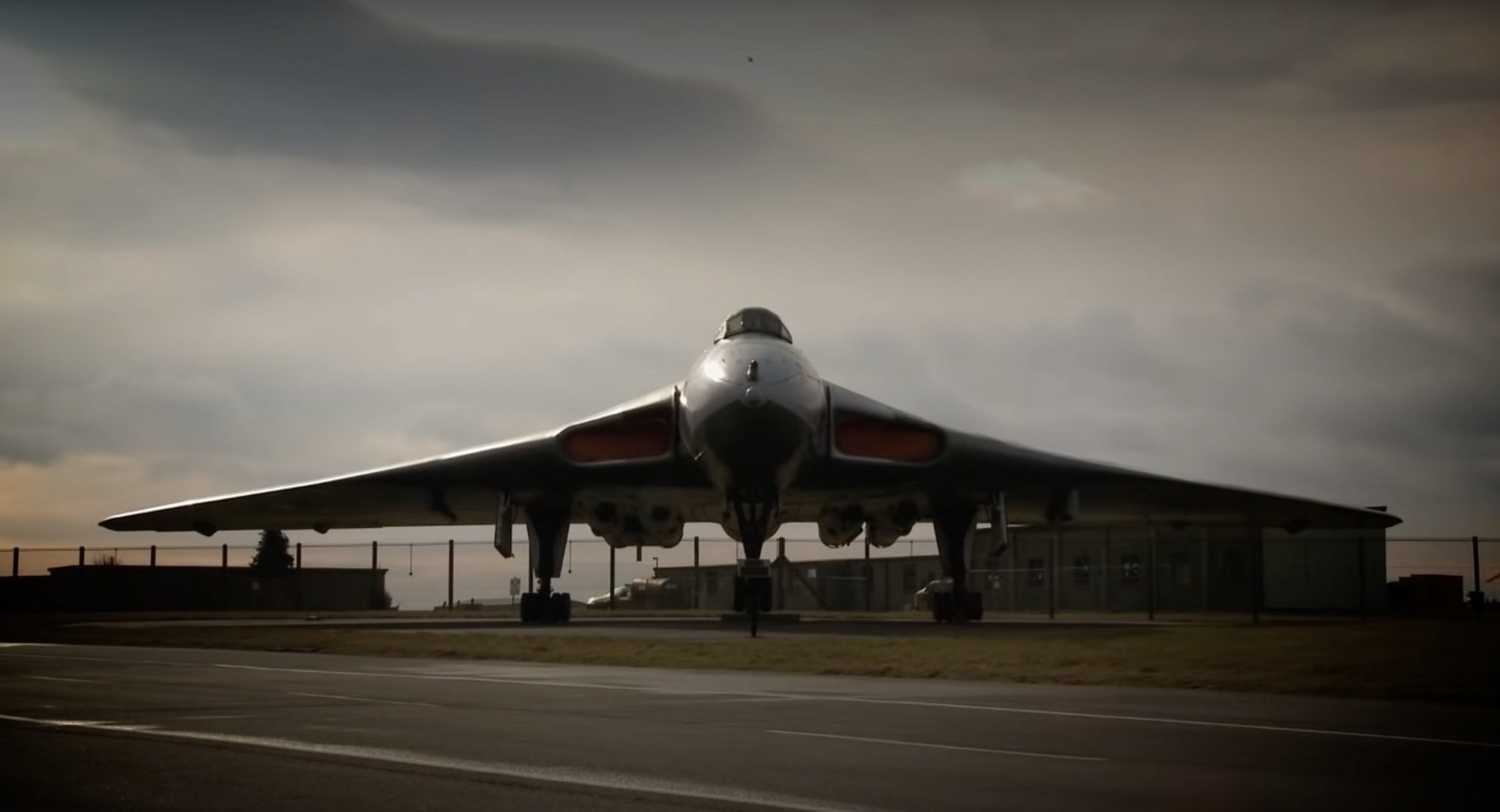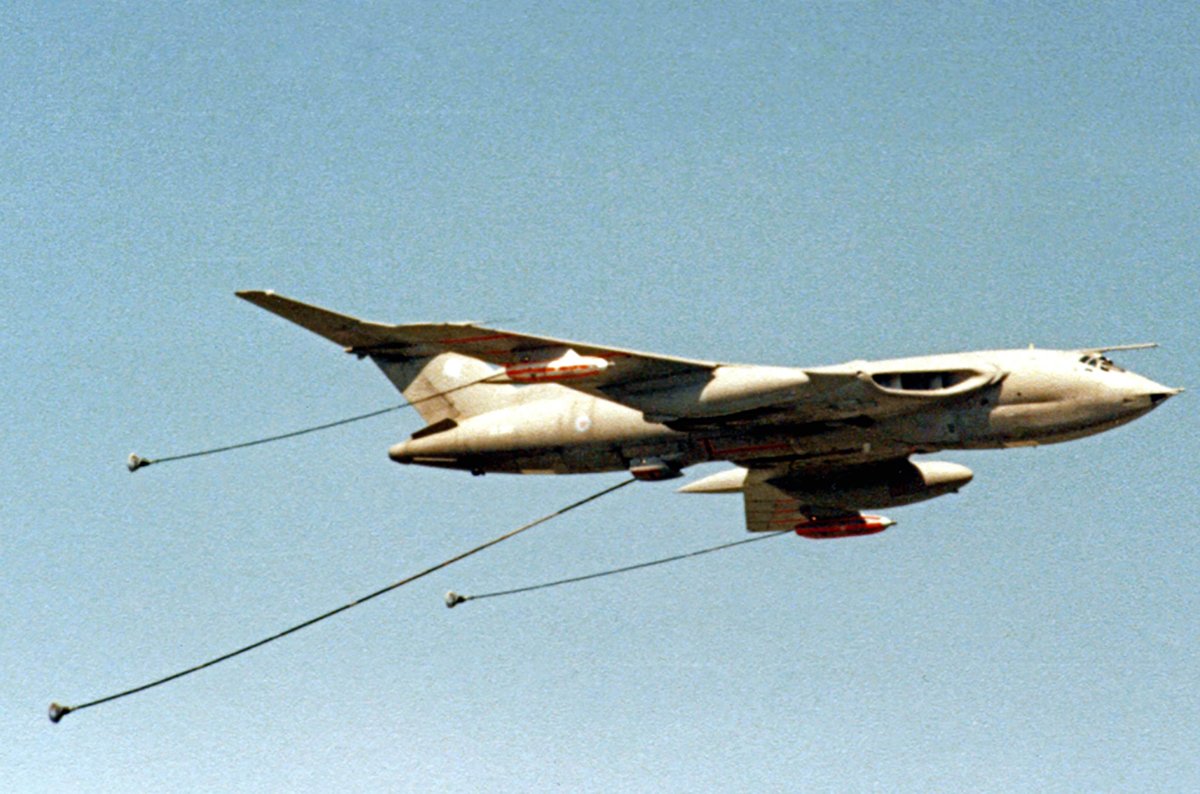Operation Black Buck: The Most Daring Bombing Mission Since World War II

XH558 Vulcan bomber in flight at an air show in 2015. Wikimedia Commons photo.
In April 1982, Argentina invaded the Falkland Islands without warning, sending the British military reeling for a response. The British Royal Air Force quickly dusted off its soon-to-be-retired long-range bombers and enacted a hasty plan code-named Operation Black Buck.
The plan called for a series of bombing missions that accompanied the naval task force’s efforts to retake the islands. The Royal Air Force missions were considered the most daring since World War II’s Operation Chastise — the so-called Dambusters Raid — in which bombs skipped across the water to strike Nazi targets.

The British RAF convened at Ascension Island’s Wideawake Airfield in the mid-Atlantic to finalize the mission’s details before launch. Each Vulcan long-range bomber required 11 Victor refueling tankers to fly 16 hours nonstop to reach their target: the Argentinian-held Port Stanley Airport, located approximately 3,900 miles away.
At 10:30 p.m. on April 30, 1982, two Vulcan bombers followed by 22 Victor tankers took off from their staging point, heading for the Falkland Islands. Shortly after takeoff, one of the Vulcan bombers experienced a serious problem. The cabin failed to pressurize, and the bomber had to return to base. The remaining Vulcan — manned by British RAF Flight Lt. Martin Withers and his four-man crew — continued on alone, refueling at each checkpoint along their flight path.

As Withers positioned his bomber for the final refueling checkpoint before reaching the target, the Vulcans and Victor tankers flew through an electrical storm, jeopardizing the entire operation. Victor tanker pilots fought with their controls as they struggled through the turbulence. The white flashes of lightning made air-to-air refueling far more dangerous than on a typical sunny day. Despite the turbulence, two Victors’ refueling tubes connected momentarily, but the bouncing aircraft sheared the refueling tube off of the Victor meant to do the final refuel for the Vulcan.
“We’re short of fuel, but we’ve come this far, I’m not turning back now,” Withers radioed, determined to complete the mission.
The Victor that was undamaged following the incident in the electrical storm, piloted by Squadron Leader Bob Tuxford, moved in to complete the refueling process.
“We flew low-level over the sea to remain hidden below their radar,” Withers recounted to Aviation Heritage Lincolnshire. “We had to pull up to do the bombing attack at 10,000 feet.”
The following morning, traveling at a speed of six miles per minute, Withers flew his Vulcan bomber over his target and released the payload. Among Withers’ 21 1,000-pound bombs, 16 exploded, and only one made a direct hit with the airstrip, knocking the runway out of action.
“We managed to put a bomb on the runway, which meant the Argentines could not use that runway for their aircraft to land and refuel if they wanted to attack our ships,” Withers later recalled.
Then, dangerously low on fuel, Withers circled around just off Rio de Janeiro, Brazil, and flew to the final rendezvous point before returning home.
Withers described seeing Tuxford’s Victor as “the most beautiful sight in the world.”

The pilots flew 16 hours and 3,900 miles home in a trip that required seven more refuelings.
Operation Black Buck continued through May and into June 1982, and pilots flew seven total sorties. At that time, the bombing mission was the longest combat bombing raid in military history. The record remained until American B-2 bombers carried out a 35 hour, 14,000-mile mission during Desert Storm. That record was broken shortly after 9/11, when B-2 bombers exceeded 70 hours in flight time over Afghanistan during Operation Enduring Freedom.
“It certainly was very strange to be going in on the first attack,” Withers reflected while describing the unusual mission. “Very sorta cold-bloodedly […] ours was the first attack of the conflict.”
Read Next:

Matt Fratus is a history staff writer for Coffee or Die. He prides himself on uncovering the most fascinating tales of history by sharing them through any means of engaging storytelling. He writes for his micro-blog @LateNightHistory on Instagram, where he shares the story behind the image. He is also the host of the Late Night History podcast. When not writing about history, Matt enjoys volunteering for One More Wave and rooting for Boston sports teams.
BRCC and Bad Moon Print Press team up for an exclusive, limited-edition T-shirt design!
BRCC partners with Team Room Design for an exclusive T-shirt release!
Thirty Seconds Out has partnered with BRCC for an exclusive shirt design invoking the God of Winter.
Lucas O'Hara of Grizzly Forge has teamed up with BRCC for a badass, exclusive Shirt Club T-shirt design featuring his most popular knife and tiomahawk.
Coffee or Die sits down with one of the graphic designers behind Black Rifle Coffee's signature look and vibe.
Biden will award the Medal of Honor to a Vietnam War Army helicopter pilot who risked his life to save a reconnaissance team from almost certain death.
Ever wonder how much Jack Mandaville would f*ck sh*t up if he went back in time? The American Revolution didn't even see him coming.
A nearly 200-year-old West Point time capsule that at first appeared to yield little more than dust contains hidden treasure, the US Military Academy said.












